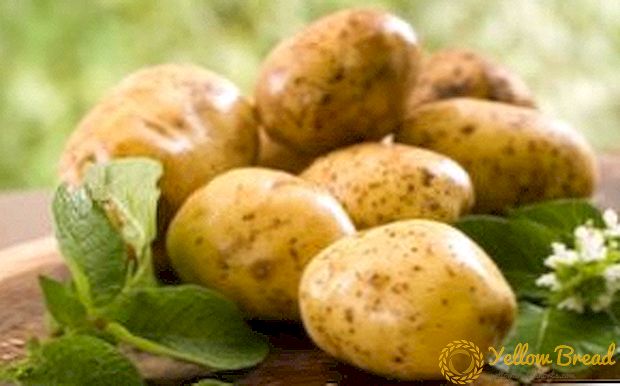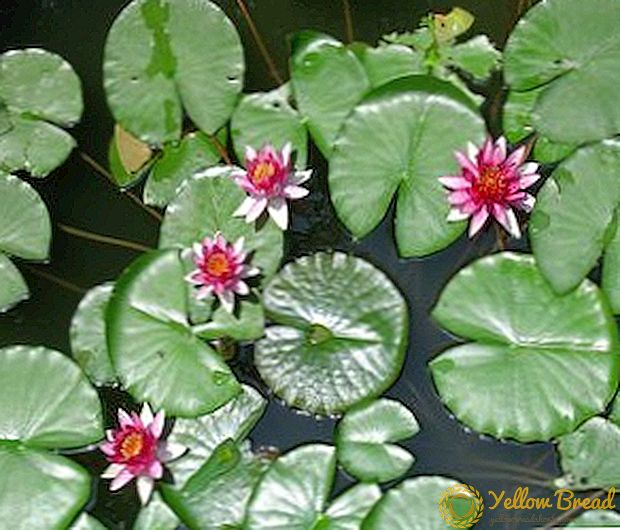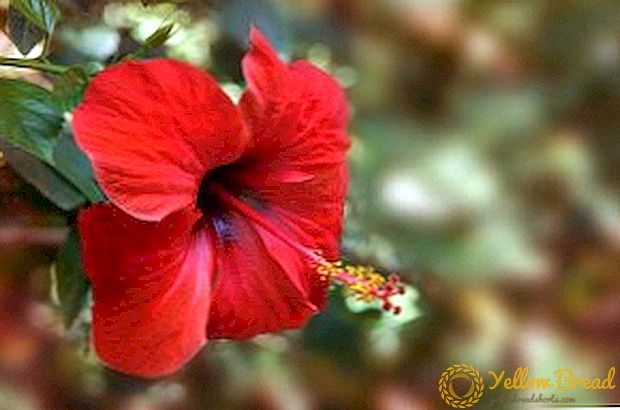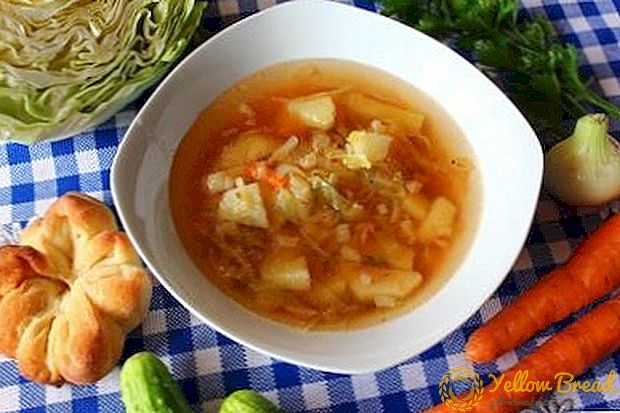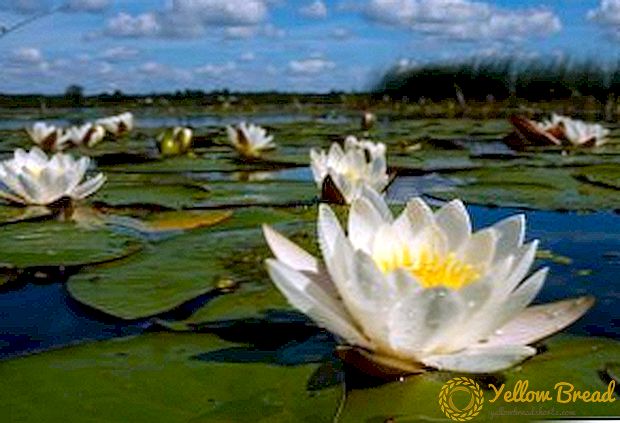 Pepper is a culture that requires attentive care and abundant feeding in the event that you intend to harvest an impressive crop of it. Even growing it in greenhouses does not save you from the need for regular fertilizer of this plant. This article contains exhaustive information about pepper feeding in the greenhouse, and what fertilizers and when to use.
Pepper is a culture that requires attentive care and abundant feeding in the event that you intend to harvest an impressive crop of it. Even growing it in greenhouses does not save you from the need for regular fertilizer of this plant. This article contains exhaustive information about pepper feeding in the greenhouse, and what fertilizers and when to use.
- Soil requirements
- Fertilizer types
- Organic
- Mineral
- Complex
- General tips and tricks (for dressing)
- When to feed?
- After transplant
- During the formation of ovaries
- During flowering and fruiting
Soil requirements
In order to harvest your pepper managed to please you, it is necessary before planting seedlings to produce a set of preparatory measures to improve soil fertility.
In addition, it will contribute to improving the efficiency of further feeding pepper in the greenhouse after it is planted. The following substances are introduced into the greenhouse soil per square meter:
- 1 tbsp. spoon superphosphate;
- 1 tsp. Potassium sulphate;
- half a bucket of compost or humus;
- 1 cup wood ash.
If you do not have the possibility of using the above substances, the use of complex mineral fertilizers is also not excluded, which should be paid at the rate of 1-2 tbsp. spoons per 1 square meter.
 After fertilization, loosen the soil or dig up the ground to a depth of ½ bayonet, then irrigate with warm water and cover the ground with a clean light-transmitting film.
After fertilization, loosen the soil or dig up the ground to a depth of ½ bayonet, then irrigate with warm water and cover the ground with a clean light-transmitting film.In such a state, the land prepared for planting should be left for a few days, until the scheduled date for the planting of peppers. Sprouts should be planted in the ground heated to at least 15 ° C, not earlier than 55 days from the time of their seeding.
The beds, in which planting is carried out, should be located at a distance of not less than a meter from each other, and the distance between plants in one lane can vary from 30 to 70 cm, depending on the type of pepper.
Fertilizer types
For feeding pepper in the greenhouse there are a lot of various fertilizers, both organic and mineral.However, you should not dwell on any one of the types of fertilizers, since only the introduction of a whole complex of different nutrients will allow you to achieve the best result.
Organic
Organic fertilizers are absolutely necessary for the normal growth of this plant, as they are one of the main conditions for the development of a favorable environment of existence from various bacteria and animals found in the soil. 
The best period for the active use of this type of fertilizer is the time when there is an active growth of the above-ground part of the pepper bushes.
This is due to the fact that it is during this period that the young plant requires the greatest amount of nitrogen, which plays a key role in the active processes of vegetation.
From organic fertilizers fit: manure (just not fresh, because it can burn the delicate roots of the plant), humus and compost. Bird dung should be used with caution because it has a very aggressive acidic environment.It is recommended to be diluted in a ratio of 1:10.
Mineral
During the period of active growth of pepper it is recommended to apply fertilizers that contain a large amount of nitrogen, for example, ammonia water. However, do not overdo it, as over-saturation of the soil with nitrogen can adversely affect yield.
Phosphorus can also be added throughout the whole growing process - this substance will not damage the plant in any way. It has a positive effect on the development of the root system of peppers, which leads to the acceleration of growth processes and the abundant and speedy formation and development of fruits. 
Along with phosphorus, peppers can be fertilized with substances that include calcium and magnesium. But with regard to doses of potassium, then its concentration in the soil should be adjusted depending on weather conditions. In warm, sunny weather, its amount should be reduced, and in overcast and rainy - increased.
Complex
This type of fertilizer is the best feeding for pepper at home.There are specially formed complex collections of substances that are suitable for growing this plant.
They are perfectly balanced, the concentrations of substances in them are selected in such a way in order to ensure you the best performance at the lowest cost.
But it is worth remembering that the excess of the recommended concentrations can adversely affect the yield, so carefully study the annotations to fertilizers before direct application. 
General tips and tricks (for dressing)
In total, produce two root feeding and an arbitrary number of foliar: depending on the needs of the plant. It is recommended to perform foliar leaves no more than once every two weeks.
Substances for dressings must be diluted with the help of separated warm water, which is close in temperature to the soil in which the peppers grow (usually about + 25 ° C). Before fertilizing, water your peppers in order to avoid damaging their root system.
After completion of top dressing and absorption of moisture into the ground, it is worth making a shallow loosening of the soil around each bush, if they are not mulched.For best results, it is worth alternating organic and mineral fertilizers.
When to feed?
In general, two supplements are necessary for pepper: one - some time after planting, and the other - in the process of forming ovaries and fruits. The third and all subsequent fertilization should be done with an eye to the condition of the plants and your personal gardening experience.
If you decide to make foliar feeding, remember that it should be done either after sunset or early in the morning, because the interaction of the nutrient solution with the sun's rays can cause harm to the ground parts of the plant.
After transplant
After 14-15 days after transplantation, the peppers begin to form the first flowers. This is a signal that it is time to make the first feeding.
To do this, it is recommended to use organic fertilizers, for example, any solution of bird droppings insisted for at least 7 days at a concentration of 1: 10-15, or a liquid mullein solution in the ratio of 1:10, which fermented for a week.
If you are unable to apply organic matter, you can take 40 g of ammonium nitrate and superphosphate, 20 g of potassium sulfate, and dissolve all this in a bucket of warm distilled water.
During the formation of ovaries
About two weeks after the first fertilization, your peppers will begin to form at your peppers. This serves as a signal that it is time for the second feeding.  If the first dressing was carried out with the help of mineral substances, then for the second one you can take a half-bucket of bird droppings, 1 cup of urea, 1 bucket of last year’s manure, add all this to a barrel of a metro, pour water and ferment for a week.
If the first dressing was carried out with the help of mineral substances, then for the second one you can take a half-bucket of bird droppings, 1 cup of urea, 1 bucket of last year’s manure, add all this to a barrel of a metro, pour water and ferment for a week.
Then you can use the mixture at the rate of 5-6 liters per 1 square meter.
During flowering and fruiting
During these periods, foliar dressing is recommended, which implies spraying the ground parts of the plant with a spray gun.
They are not critical for the proper growth and development of the plant, and therefore they can be completely avoided if, in your opinion, all processes proceed properly.
If you see that plants are not gaining vegetative mass quickly enough and confidently, you can spray a solution of urea (1 tsp. Per 10 liters of water).
When you notice that the peppers began to drop flowers and ovaries, boric acid supplementation will come to the rescue (1 tsp. Per 10 liters of water). In case of poor fruit formation, it is recommended to apply treatment with superphosphate (2 tsp to 10 l of water).  So, we hope that this article has helped you understand that feeding pepper, in whatever greenhouse it grows - from polycarbonate, from spunbond or plastic film - is extremely necessary. Using tips from this article, you can get a terrific crop of this vegetable.
So, we hope that this article has helped you understand that feeding pepper, in whatever greenhouse it grows - from polycarbonate, from spunbond or plastic film - is extremely necessary. Using tips from this article, you can get a terrific crop of this vegetable.

